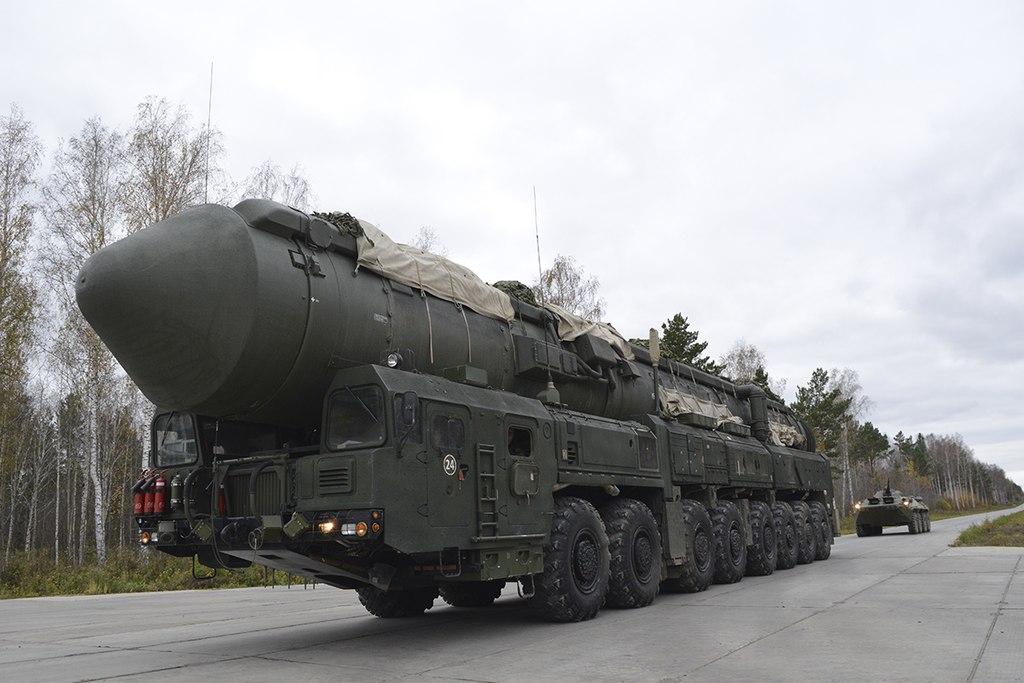A snapshot of recent news from sources around the world on the ongoing Russia-Ukraine war.

Political Developments
President Vladimir Putin has set a “red line” for the U.S. and its allies, warning that Moscow may respond with nuclear weapons if Ukraine uses long-range Western missiles to strike deep inside Russia.
Ukrainian President Volodymyr Zelensky traveled to the U.S. this week to address the U.N. General Assembly, as well as meet with top officials in the White House and on Capitol Hill. He will also meet the Republican presidential nominee, Donald Trump, during his visit.
Military Assistance to Ukraine
Washington rolled out several new assistance packages for Ukraine this week, beginning with a $375 million tranche unveiled on Wednesday. This was followed by an announcement of close to $8 billion in new military aid, including the delivery of AGM-154 Joint Standoff Weapons.
The $375 million provision is a Presidential Drawdown Authority (PDA) package unveiled Wednesday. PDA aid involves transferring equipment directly from U.S. inventories. This package addressed Ukraine’s need for air-to-ground weapons, ammunition for rocket launchers and artillery, armored vehicles, and anti-tank weapons. Some of the weapons included in this package are HIMARS rockets, TOW missiles, Javelin and AT-4 anti-armor systems, M1117 Armored Security Vehicles, and Mine Resistant Ambush Protected Vehicles, among others.
President Joe Biden also allocated $5.55 billion in remaining PDA authorities that were previously set to expire on September 30, which marks the end of the 2024 fiscal year. The funds reflect the remaining balance of PDA funding originally appropriated by Congress for use in FY24. Biden’s action allows the Pentagon to continue utilizing this funding to support future drawdown donations over the coming weeks and months. Congress will have to pass legislation to authorize any new PDA funding for FY25.
Finally, on Thursday the Pentagon announced a separate $2.4 billion military aid package to provide Kyiv with air defense systems, unmanned aerial systems and counter-UAS equipment, unmanned surface vessels, air-to-ground munitions, and secure communications equipment. Although not specified in the Pentagon press release, this package includes another Patriot air defense battery, as well as more Patriot missiles. The U.S. is also sending AGM-154 Joint Standoff Weapons for the first time. The JSOW is an air-launched missile that can hit targets up to 130 kilometers away. The missiles will be equipped on Ukraine’s F-16s to increase their long-range strike capabilities. The aid package also includes funds to help strengthen Ukraine’s domestic defense industrial base and bolster maintenance and sustainment capabilities. This funding was provided through the Ukraine Security Assistance Initiative (USAI), which is used to procure new equipment directly from manufacturers. The U.S. has provided $56.3 billion in security assistance since Russia’s invasion in February 2022, including PDA and USAI funding.
The EU is preparing to offer Ukraine a €35 billion loan package as the war intensifies. This major financial commitment reflects the bloc’s growing concern about the conflict’s impact on European security.
Lithuania will deliver 5,000 FPV drones to Ukraine under a new initiative that will also supply its own military. The project will source the FPV drones from Lithuania’s own industry, such as the GA-10-FPV-AI drone made by Granta Autonomy.
France has completed training the first group of Ukrainian pilots on the operation of AlphaJets, the French Ministry of Armed Forces announced recently. The pilots trained for about six months, beginning in March 2024.
Battlefield Updates
Manpower continues to be one of the biggest challenges facing the Ukrainian Armed Forces, with commanders revealing to the Financial Times in interviews that the quality of new recruits has generally been low, and many are moreover being killed or wounded soon after first deployment.
Ukraine’s drone attacks have inflicted significant damage on Russia’s munitions supply, potentially disrupting their military operations.
A Russian-operated medium-altitude, long-endurance (MALE) unmanned air vehicle (UAV) has crashed. The UAV was flying near Taganrog, a port city in the Rostov region. The reason for this incident is under investigation.
Russia has launched another attack on Kyiv, the Ukrainian capital. Moscow fired a new wave of missiles and drones at targets in Kyiv, especially the power generation system. This attack lasted for five hours. Russia’s attack, which took place during the night of September 25-26, included six missiles and 78 Shahed attack drones.
In his UNGA speech, Zelensky warned that Russia intends to attack his country’s nuclear power infrastructure in the coming weeks.
“Now, Putin does seem to be planning attacks on our nuclear power plants and their infrastructure, aiming to disconnect the plants from the power grid. With the help of satellites, by the way, ladies and gentlemen, by the way, satellites of other countries, Russia is getting images and detailed information about the infrastructure of our nuclear power plants.” – Ukrainian President Volodymyr Zelensky
For 50 years, Forecast International intelligence reports have been the aerospace and defense industry standard for accurate research, analysis, and projections. Our experienced analysts compile, evaluate, and present accurate data for decision makers. FI's market research reports offer concise analysis of individual programs and identify market opportunities. Each report includes a program overview, detailed statistics, recent developments and a competitive analysis, culminating in production forecasts spanning 10 or 15 years. Let our market intelligence reports be a key part of reducing uncertainties and mastering your specific market and its growth potential. Find out more at www.forecastinternational.com



